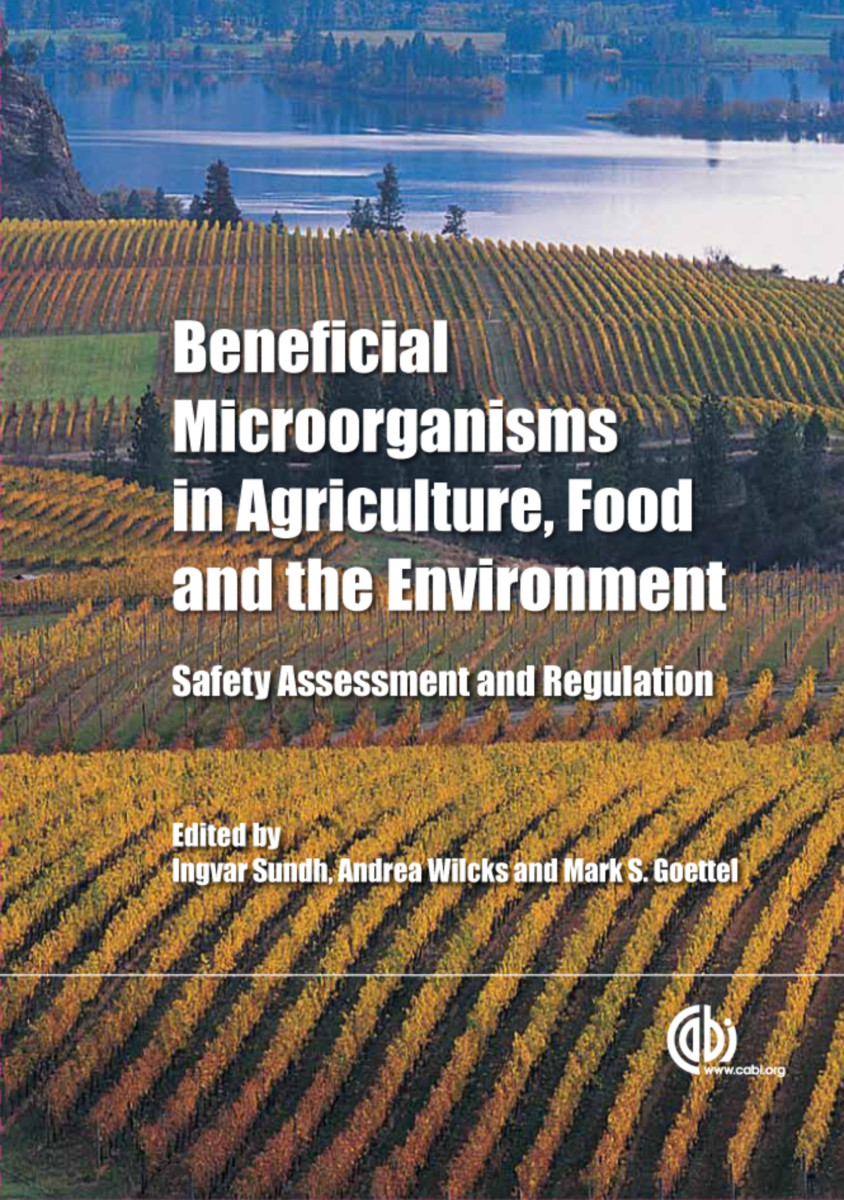Beneficial Microorganisms in Agriculture, Food and the Environment
Safety Assessment and Regulation
- Publisher
CABI - Published
9th January 2013 - ISBN 9781845938109
- Language English
- Pages 360 pp.
- Size 6.875" x 9.75"
- Images 17 b/w illus
Microorganisms are widely used in various beneficial applications, including food, pest control, bioremediation, biodegradation, biofuel processes, and plant symbiosis and growth stimulation. This book provides an overview of the available methodology for safety assessments of microorganisms, including determination of their infectivity and whether they produce toxic or sensitizing substances. Also covered are the regulatory systems in risk assessment and management of microbial products, quarantine legislations, international treaties, the importance of public risk perception and risk reduction behavior.
1. Microbes and the law - Safety assessment and regulation of beneficial microorganisms
Part I: Food and Feed
2. Safety and regulation of microorganisms added to the food and feed chains, including probiotics - Introduction and overview
3. Microbes for human and animal consumption
4. Antibiotic resistance in relation to starter cultures and probiotics
5. Biopreservation of food and feed by postharvest biocontrol with microorganisms
Part II: Pest Control Agents and Plant Growth Promoters
6. Safety and regulation of microbial pest control agents and microbial plant growth promoters - Introduction and overview
7. Microbial control of invertebrate pests
8. Microbial control of plant diseases
9. Safety and regulation of microbial control of weeds
10. Plant growth promotion with microorganisms
Part III: Other Industrial Applications
11. Regulation of microorganisms used for bioremediation, biorefinery and other bioindustrial applications in the USA and Canada
Part IV: Evaluating Safety
12. Determining the safety of microorganisms - Introduction and overview
13. Virulence genes in risk assessment of beneficial microorganisms: what do genome sequences tell us?
14. Occupational safety of microbial agents
Part V: Model Test Systems
15. Model systems for testing microbial pathogenicity, virulence and toxicity -
Introduction and overview
16. Nematode and insect models to assay microbial infectivity, virulence and cytotoxicity
17. Assessing potential cytotoxicity of biocontrol microorganisms using invertebrate assays
18. Assessing genotoxic effects of microbial products
19. Assessing the sensitization and irritation properties of microorganisms
Part VI: International Harmonization and Risk Perception
20. International conventions and agreements - Consequences for international trade and utilization of biological matter including microorganisms
21. OECD guidelines and harmonization for microbial control agents
22. Understanding public risk perception for the use of beneficial microorganisms
Ingvar Sundh
Ingvar Sundh is Professor of Ecological Microbiology, Swedish University of Agricultural Sciences.
Andrea Wilcks
Andrea Wilcks is Senior Scientist , Technical University of Denmark.
Mark S. Goettel
Mark S. Goettel is at the Agriculture and Agri-Food Canada, Lethbridge, Canada.


